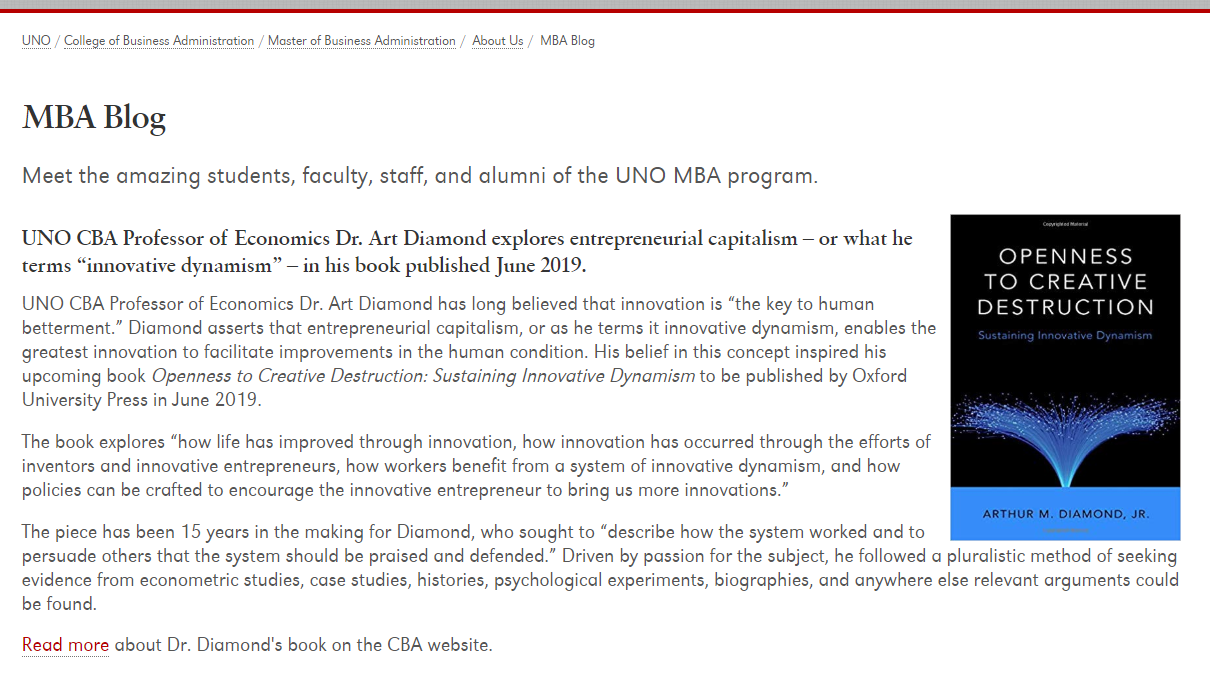(p. A1) Never one to shy away from a fight, Elizabeth Warren had found a new sparring partner. She had only recently started teaching at the University of Texas School of Law, but her colleague Calvin H. Johnson already knew her well enough to brace for a lively exchange as they commuted to work.
Indeed, on this morning in 1981, Ms. Warren again wanted to debate, this time arguing on the side of giant utilities over their customers.
Her position was “savagely anti-consumer,” Mr. Johnson recalled recently, adding that it wasn’t unusual for her to espouse similar pro-business views on technical legal issues.
Then something changed. He calls it Ms. Warren’s “road to Damascus” moment.
“She started flipping — ‘I’m pro-consumer,’” Mr. Johnson said.
That something, as Ms. Warren often tells the story, was her deepening academic research into consumer bankruptcy, its causes, and lenders’ efforts to restrict it. Through the 1980s, the work took her to courthouses across the country. There, she said in a recent interview, she found not only the dusty bankruptcy files she had gone looking for but heart-wrenching scenes she hadn’t imagined — average working Americans, tearful and humiliated, admitting they were failures:
(p. A10) “People dressed in their Sunday best, hands shaking, women clutching a handful of tissues, trying to stay under control. Big beefy men whose faces were red and kept wiping their eyes, who showed up in court to declare themselves losers in the great American game of life.”
. . .
The revelations from her bankruptcy research, by her account, became the seeds of her worldview, laid out in her campaign plans for everything from a new tax on the wealthiest Americans to a breakup of the big technology companies.
. . .
In 1979, Ms. Warren recruited her parents from her native Oklahoma to her home in the Houston suburbs to help babysit her two young children.
Then a professor at the University of Houston, she would be spending several weeks at a luxury resort near Miami, one of 22 law professors selected to study an increasingly popular discipline known as “law and economics.’’ One of its central ideas is that markets perform more efficiently than courts.
Mr. Johnson, Ms. Warren’s former Texas commuting partner, believes that it was an important influence on her early thinking.
“Before Liz converted, she came to us from the decidedly anti-government side of law and economics,” he said.
The summer retreat was colloquially known as a “Manne camp,” after its organizer, the libertarian legal scholar Henry G. Manne. With financial support from industry and conservative foundations, Mr. Manne had formed a Law and Economics Center at the University of Miami. (He would later move operations to Emory University and then to George Mason University.)
The mission of the retreat was to spread the gospel of free-market microeconomics among law professors. One participant, John Price, a former dean of the law school at the University of Washington, described it as “sort of pure proselytizing on the part of dedicated, very conservative law and economics folks,” with an emphasis on an anti-regulatory agenda. One faculty member, he recalled, suggested eliminating the Consumer Product Safety Commission.
. . .
While some in the group have said Ms. Warren expressed skepticism at the libertarian ideology, Ms. Blumberg remembers someone very much developing the early stages of her career, who was “far more captivated than I” with the theories.
. . .
Ms. Warren . . . wrote to Mr. Manne in 1981, attaching a copy of her latest published article. She was sending him one article a summer, she wrote, and each “increasingly reflects my time at LEC.”
. . .
“This is really hard-core law & econ analysis,” Todd J. Zywicki, a law professor at George Mason who formerly served as executive director of the Manne Center, wrote in an email. “If you had given me this article with the author anonymized and asked me who wrote it, I would have answered that it was one of the leading scholars in the law & economics of commercial and contract law. Never, in a million years, would I have thought this article was written by EW.”
(Note: the online version of the story has the same date as the print version, and has the title “THE LONG RUN; The Education of Elizabeth Warren.”)


